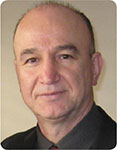The study of lateral variability of Kockatea Shale across the Perth Basin: an integration of electrofacies and lithofacies characteristics
Hanieh Jafary Dargahi A and Reza Rezaee ACurtin University
The APPEA Journal 54(1) 241-248 https://doi.org/10.1071/AJ13024
Published: 2014
Abstract
The recognition of distinct rock types through log responses, referred to as electrofacies, is a fundamental role in mapping stratigraphic units that do not have any specific geological description. Lateral variability within adjoining intervals is differentiated by studying lithological characteristics such as petrography and mineralogy acquired from visual core description. In non-cored wells electrofacies analysis, therefore, is the most reliable way in determining reservoir zonations. The electrofacies’ accuracy is critically important in defining potentially desirable rock types for shale gas reservoirs in non-cored intervals, which can be obtained through an analogy of well log responses in identical lithofacies within cored wells. Considering the complexity of making a final prediction due to the unavailability of different well logs covering the whole area, only the gamma-ray log is used in determining electrofacies patterns within the studied shale gas intervals. The electrofacies patterns within identified lithofacies have been studied for the Kockatea Shale, which presented analogous patterns for identical lithological facies. The similarity has allowed for the correlation of lithofacies in cored and non-cored wells, and the evaluation of lithofacies variability and development within various wells. The correlation of the defined electrofacies indicates facies changes across the basin in association with thickening of some lithofacies. The thickest part of the electrofacies is shown at the Dandaragan Trough and the Beagle Ridge. Some electrofacies, however, have disappeared in some parts of these areas, such as lithofacies E in the Beagle Ridge, which is partially replaced by electrofacies C.

Hanieh Jafary Dargahi is a PhD candidate in Curtin University’s Department of Petroleum Engineering. She is working on identifying the shale-gas potential of the Perth Basin in cooperation with the shale-gas research group. Hanieh’s areas of interest are geology, petrography, sequence stratigraphy, and organic geochemistry. She has published four journal papers and two peer-reviewed conference presentation. Presently, Hanieh is studying under the supervision of Dr Reza Rezaee in Curtin University’s shale-gas research group. Hanieh.jafarydargahi@postgrad.curtin.edu.au |

Reza Rezaee is an associate professor at Curtin University’s Department of Petroleum Engineering. With a PhD in reservoir characterisation, he has more than 25 years’ experience in academia. Reza has supervised more than 60 MSc and PhD students during his university career to date. He has published more than 120 peer-reviewed journal and conference papers, and is the author of three books on petroleum geology, logging, and log interpretation. Reza’s research has been focused on integrated solutions for reservoir characterisation, formation evaluation, and petrophysics. Presently, he is focused on unconventional gas—including gas shale and tight-gas sand studies—and is the lead scientist for the Western Australian Energy Research Alliance (WA:ERA ) Exploration Initiative Scheme (EIS ) Tight Gas and Shale Gas research projects. He established Curtin University’s Unconventional Gas Research Group in 2010. R.Rezaee@exchange.edu.au |


